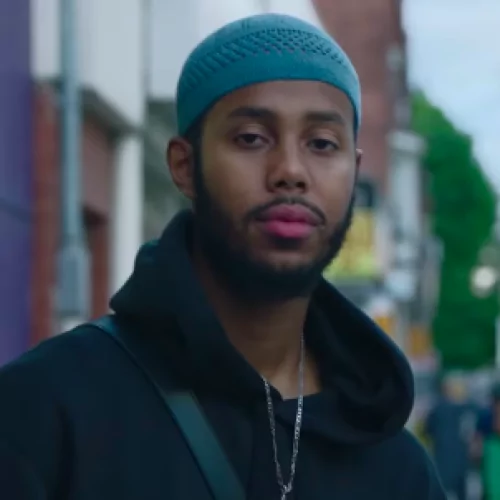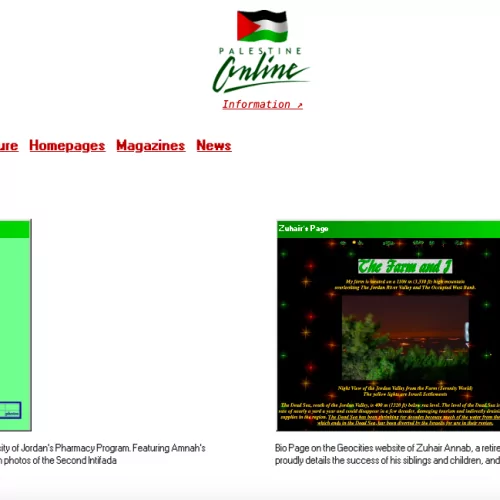The story of Handala begins and ends when he leaves home. He walks around barefoot, in worn-out clothes, and sharp hedgehog-like hair. With his hands clasped behind his back, never showing his face, he is perpetually facing away from the viewer. Handala is ten-years-old and he will always remain ten-years-old until he can return to his homeland, Palestine. He won’t turn around and look at us until he can go home. Although a fictional creation, Handala embodies the silent struggle of countless individuals grappling with injustice, his nuanced messages of resistance echoing through the ages.
Since 1973, Handala has defiantly averted his gaze, a symbolic protest against the global complicity in injustice. Conceived by the late Palestinian cartoonist Naji al-Ali, the character draws inspiration from al-Ali’s own childhood as a refugee, mirroring the ongoing plight of Palestinians displaced during the 1948 Nakba.
Initially, the cartoon first appeared in an Kuwaiti newspaper in 1969 and was drawn facing the viewer. However, that changed in 1973 following the October War, when al-Ali started to depict Handala with his back turned to reflect how the world had itself turned its back on the Palestinians. The name “Handala” derives from the fruit “handhal,” a bitter fruit that grows in the dry areas of Palestine. It grows back when cut and has deep roots.
In his explanation of the cartoon, the cartoonist said, “His name is Handala and he has promised the people that he will remain true to himself. I drew him as a child who is not beautiful; his hair is like the hair of a hedgehog who uses his thorns as a weapon. Handala is not a fat, happy, relaxed, or pampered child. He is barefooted like the refugee camp children, and he is an icon that protects me from making mistakes. Even though he is rough, he smells of amber. His hands are clasped behind his back as a sign of rejection at a time when solutions are presented to us the American way.”
He added, “Handala was born ten-years-old, and he will always be ten-years-old. At that age, I left my homeland, and when he returns, Handala will still be ten, and then he will start growing up. The laws of nature do not apply to him. He is unique. Things will become normal again when the homeland returns. I presented him to the poor and named him Handala as a symbol of bitterness. At first, he was a Palestinian child, but his consciousness developed to have a national and then a global and human horizon. He is a simple yet tough child, and this is why people adopted him and felt that he represents their consciousness.”
Born in 1938 in a village called Galilee in Palestine, just ten years before the Nakba, the artist’s hometown was one of the hundreds that were destroyed in the mass displacement that gave birth to the state of Israel in 1948.
Among the 750,000 Palestinians that were forcibly kicked out of their land, al-Ali was forced to leave home and take refuge in one of the worst refugee camps in neighboring Lebanon, Ain el Hilweh. “Life in the camp was unbearable, full of daily humiliation, ruled by poverty and despair” said the late cartoonist. The symbolism of Handala reflects the artist’s stance as a ten-year-old who never got to grow up but saw the world for what it is. At a time when freedom of speech was heavily censored in the Arab region, al-Ali’s sketches were able to express the inexpressible to the viewer through simple drawings.
Tragically, on Aug. 29, 1987, al-Ali was assassinated in London, a crime that remains unsolved. He never returned to his homeland, leaving Handala frozen in time, forever ten-years-old, unable to reveal his face to the world.









